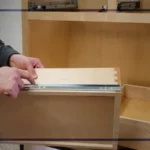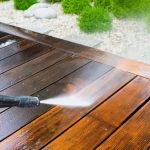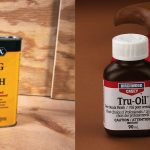Can You Put Polyurethane Over Epoxy? A Compatibility Check
Primarily, epoxy is a two-part polymer known for its excellent adhesion to concrete and other substrates. On the contrary, urethane is a flexible plastic resin with excellent UV, chemical, and abrasion resistance.
Now back to our question at hand – can you put polyurethane over epoxy? Yes. You can apply polyurethane over epoxy. In fact, polyurethane top coat over the epoxy floor is common practice in garage and industrial flooring. A poly topcoat adds an extra layer of protection against wear, UV rays, and chemicals. Nevertheless, ensure the epoxy surface is clean and cured for proper adhesion and performance.
Let’s dive into whether you can put polyurethane over epoxy. We’ll take you through how to apply polyurethane over epoxy and explore the reasons for adding a polyurethane topcoat.
Can You Put Polyurethane Over Epoxy? Digging Deeper
Yes. The use of polyurethane as a topcoat over epoxy is a common practice. You can apply oil-based or water-based polyurethane over your epoxy floor, table, or countertop.
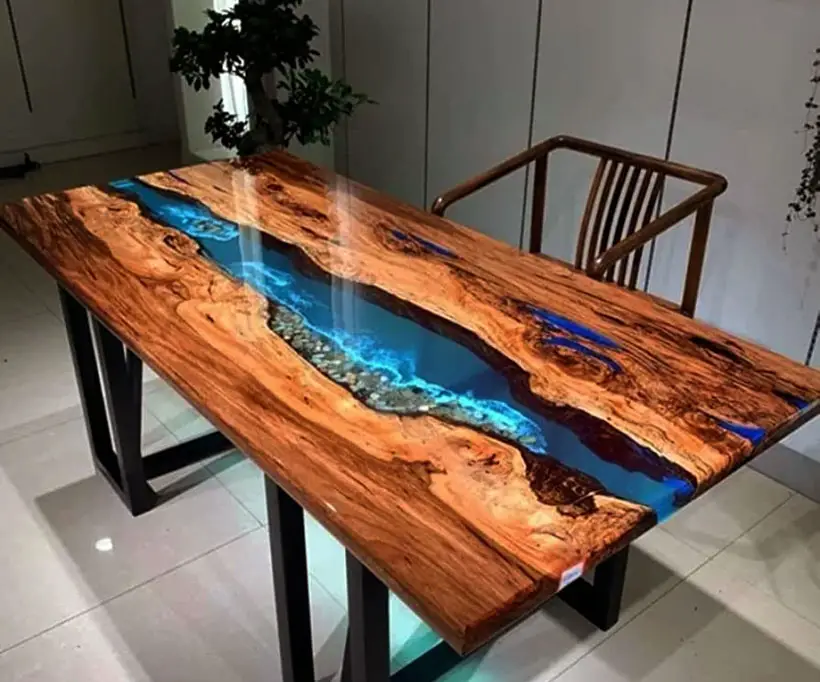
Nevertheless, the state of the epoxy surface and the application method will largely determine how best the poly adheres and performs over time. In that regard, you might want to observe a few things.
- Primarily, ensure the epoxy surface is wholly cured. We don’t recommend putting polyurethane over sticky epoxy and for good reason. A tacky surface means the epoxy is still in the curing process. The result is that the topcoat will trap moisture, causing bubbles, peeling, and uneven finish.
- Generally, it will take anywhere from 72 hours for your epoxy surface to fully cure. This can be much longer depending on environmental conditions. You’ll know it has fully cured if you can’t dent the surface with your thumbnail.
How clean the epoxy surface is will also dictate your success in this project. So ensure the epoxy surface is clean and free of any debris or contaminants like oil. You should achieve this through light sanding followed by a wipe-down using mild dish soap.
Again, take care not to pour polyurethane thick. Instead, do multiple thin coats to prevent dripping, bubbles, and wrinkles. Plus, it makes your poly topcoat dry faster.
Why Put Polyurethane Over Epoxy?
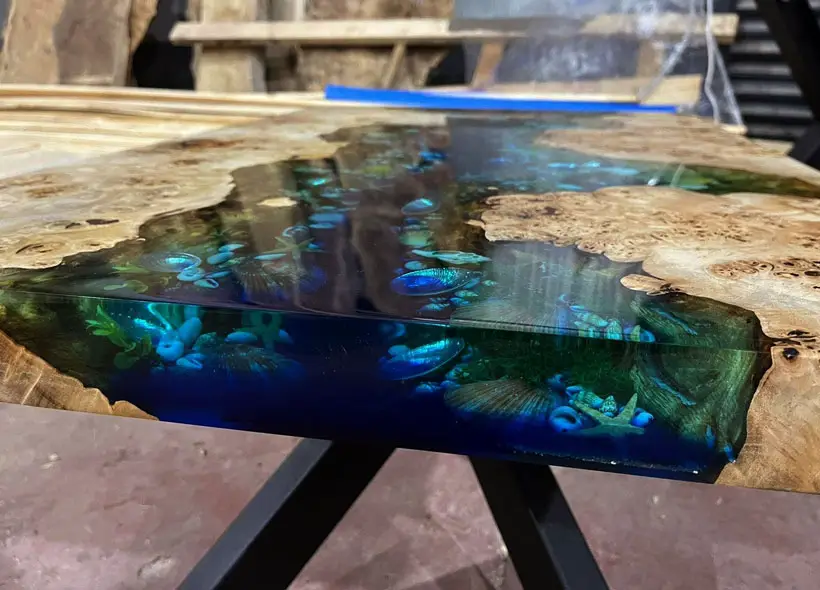
Epoxy is impact resistant and long-lasting. So, why add a polyurethane topcoat on your epoxy floor or countertop?
- Apparently, epoxy can be vulnerable to damage. It can chip, scratch, and stain. Plus, exposure to UV rays causes the epoxy to yellow over time. Polyurethane compensates for these shortcomings of epoxy, making it the best finish over epoxy resin.
- Primarily, polyurethane is UV resistant, meaning a poly topcoat will prevent the underlying epoxy from yellowing. In addition, polyurethane has a high cross-linked film for enhanced scratch resistance. Oil-based clear coats, in particular, offer exceptional resistance to surface scratching.
- You can also incorporate silica additives into polyurethane formulation when applying over epoxy. Study shows that silica makes polyurethane coats more anti-scratch and anti-alga. This reinforcement filler also improves the thermal stability, UV resistance, and abrasion resistance of polyurethane.
- Also, epoxy is highly rigid, making it more susceptible to cracking. The highly flexible nature of polyurethane compensates for this flow. A polyurethane topcoat will accommodate substrate movements and temperature fluctuations, keeping your floor intact.
- It’s true that epoxy resin is resistant to some chemicals. Nevertheless, polyurethane withstands harsh cleaning products. So, a polyurethane topcoat is an excellent barrier to shield your epoxy from chemical exposure. Moreover, it improves cleanability to eliminate issues like staining from cleaning products.
Note that you can use spar urethane over epoxy as an alternative to polyurethane. It’s quick-drying and more UV stable. Be that as it may, it’s less resistant to chemicals and alcohol. Also, you can’t lay it as thin as you would with polyurethane.
How To Put Polyurethane Over Epoxy?
From our analysis of the benefits of applying polyurethane over epoxy, we can conclude that polyurethane is the perfect finishing touch. But as we indicated earlier, the application technique is also crucial for a flawless finish. In that regard, here’s a step-by-step guide on the best way to apply polyurethane sealer over epoxy.
Tools and Materials
- Polyurethane: water-based or oil-based
- Thinner: Denatured alcohol or distilled water (water-based), mineral spirit (oil-based)
- Sandpaper/sanding block: 80-grit, 220-grit, 320-grit, 400-grit
- Orbital sander (for large projects)
- Polishing compound
- High-quality paint roller, brush, or aerosol spray
- Gloves and respirator
- Vacuum cleaner
- Tack cloth
- Tape
- Mixing container or paint roller tray
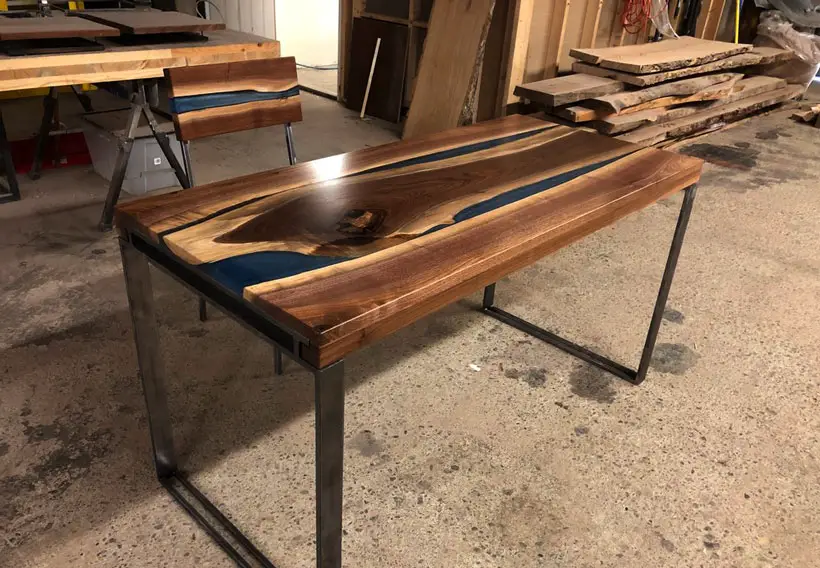
Surface Preparation
- Prepare the epoxy surface by first sanding it with the 80-grit sandpaper to establish a better mechanical bond. For a large project, we recommend a sanding disk and an orbital sander. But for small projects like tabletops, you can go manual with a sanding block.
- While at it, ensure you don’t sand through the epoxy layer. Essentially, you want to apply medium pressure for both manual and automatic sanding methods.
- Use the vacuum cleaner to suck the dust created from sanding.
- Finish by wiping off the epoxy surface using a lint-free cloth dabbed in mild dish soap solution.
- Give your epoxy surface time to dry and tape areas like trims and walls you don’t want to coat with polyurethane.
- Again, ensure the area has good ventilation. Open the windows or use a ventilation fan if necessary. Also, a respirator will come in handy for spray-on application.
Mixing Polyurethane
- Choose the right polyurethane that’s compatible with your application method and desired finish. Both water-based and oil-based polyurethane will do great. Be that as it may, read the manufacturer’s recommendations for the best compatibility with epoxy.
One of the best products we recommend is two-part polyurethane. So, if the question “Can I put two-part epoxy over polyurethane” bothers you, you have your answer. Essentially, it comes in two parts that you mix together and is specially formulated for surfaces like epoxy. Nevertheless, other polyurethane products will do just fine.
- Prepare your polyurethane formulation by thinning it with distilled water for water-based products or mineral spirit for oil-based.
- Thin your polyurethane by 10% using a paint mixer drill or a stirring stick.
Applying Polyurethane
- Step 1: Pour a small amount of thinned polyurethane into a clean container or paint roller tray if you want to apply polyurethane using a roller. Take care not to agitate it to prevent bubbles.
- Step 2: Dab your brush or roller into thinned polyurethane and start applying your first coat of polyurethane. Alternatively, you can use the spray-on method. Lay it thin and work in small sections for consistent coverage.
Avoid over-brushing or applying too much pressure on the paint roller to avoid streaks and bubbles. Give the first coat time to dry as per the manufacturer’s guidelines.
- Step 3: Once dry, use the 220-grit sandpaper to sand your first coat of polyurethane. The idea is to improve adhesion and create a smooth surface for subsequent coats of polyurethane. Use a soaked tack cloth to wipe away sanding residue.
- Step 4: Repeat steps 2 and 3 for additional polyurethane coats. Use finer grit sandpaper for subsequent coats, with the top coat being the finest 400-grit. Typically, three coats of polyurethane are sufficient for excellent durability and thickness. Nevertheless, you can add more coats.
- Step 5: After lightly sanding the last coat, put some finishing touches. For this, we recommend using a polishing compound to buff the last coat. The idea is to achieve a smooth, shiny surface.
Clear Coat Alternatives to Polyurethane
Polyurethane isn’t the only sealer for epoxy. There are other best alternatives to try out. Our top recommendations are spar urethane, varnish, shellac, and lacquer. Note that shellac comes in raw and purified forms. For this job, we recommend purified shellac as it has fewer impurities and more wax.
Lacquer has the best crystal clear finish and dries faster. However, it tends to discolor over time. Spar urethane and varnish are best for outdoor use. But one downside of spar urethane is that it dissolves in alcohol.
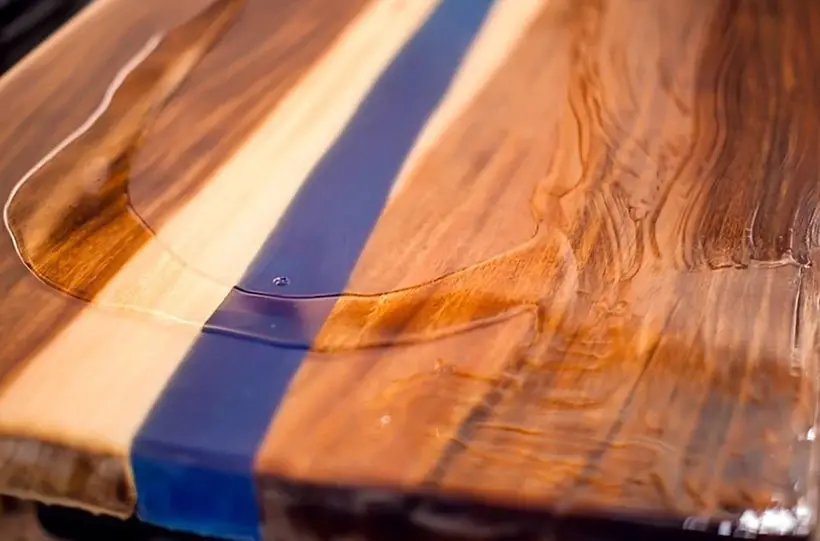
Shellac, on the other hand, leaves you with a high-gloss finish. But as with spar urethane, it dissolves in alcohol.
While you have more alternatives, none beats the durability of polyurethane. It’s the hardest and most durable topcoat available in all finishes, from matte to gloss. Plus, it’s the easiest to clean, especially water-based polyurethane.
If you’re wondering about using polyurethane over epoxy-coated surfaces, our guide on tung oil vs. polyurethane comparisons might offer insights that could be relevant to your finishing decisions. Additionally, if you’re considering applying polyurethane over surfaces previously finished with shellac, our article on can you put polyurethane over shellac matters is here to offer guidance. We understand the importance of achieving the best finishes and addressing specific application scenarios, and our comprehensive resources are designed to help you navigate and make informed choices for your woodworking projects.FAQs
Let’s highlight burning questions related to applying polyurethane over epoxy.
Q. Which is stronger, epoxy or polyurethane?
Polyurethane packs more resistance to surface damage. It’s abrasion-resistant, UV-stable, and chemical resistant. Also, it’s flexible to withstand impact and avoid cracking, unlike more rigid epoxy. These properties make polyurethane stronger.
Q. Can I put polyurethane before epoxy?
Yes. It’s possible to apply epoxy over polyurethane. However, you’ll only achieve a good bond using oil-based polyurethane. Apparently, epoxy doesn’t adhere well to a water-based polyurethane base, causing it to soften and wrinkle.
Q. Can you put polycrylic over epoxy resin?
Yes. Polycrylic is a good substitute for polyurethane and you can use it on fully cured epoxy. In fact, this fast-drying sealer uses a bit of polyurethane and offers a clearer coat. Nevertheless, it’s not as durable as polyurethane.
Conclusion
From our analysis, you can put polyurethane over epoxy. In fact, polyurethane plus epoxy is a winning combination. A polyurethane topcoat is a great way of adding extra protection and aesthetics to your epoxy surface.
Nevertheless, the epoxy should be fully cured and clean to ensure better compatibility and enjoy the protective properties of polyurethane. Typically, the application procedures should be easy to follow. Be that as it may, you can create a practice project before tackling the real one. Doing so will help you pinpoint mistakes that you need to avoid.

